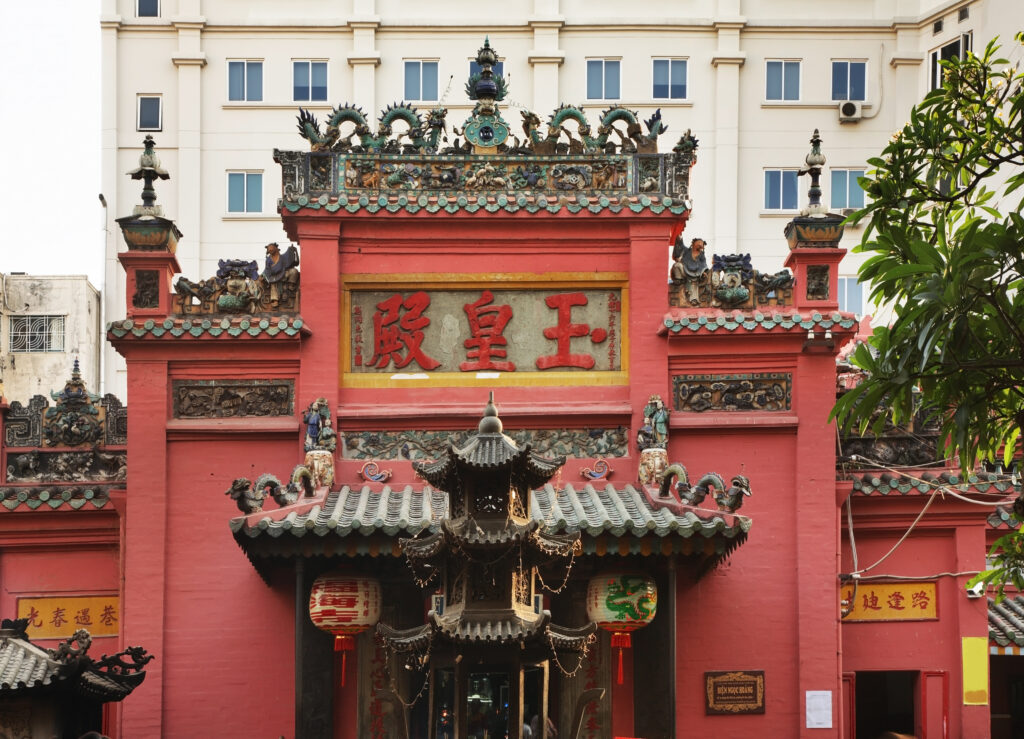
Jade Emperor Pagoda, one of the most renowned temples in Ho Chi Minh City, has stood for over a century as a vibrant hub of religious activity. Its fame reached new heights when President Barack Obama visited in 2016, making it a must-see for both locals and tourists. Located at District 1, this bustling yet peaceful temple offers a unique window into Vietnam’s spiritual and cultural heritage. Whether you’re seeking spiritual solace, exploring history, or simply enjoying the serene atmosphere, Jade Emperor Pagoda promises an unforgettable experience.
Location and Opening Times

Located at 73 Mai Thi Luu, Da Kao Ward, District 1, Ho Chi Minh City, Jade Emperor Pagoda is conveniently placed near the city center. Despite being in a busy district, the temple’s quiet ambiance contrasts with the city’s vibrant energy. The temple is open daily from 7:00 AM to 6:00 PM, offering plenty of time for visitors to immerse themselves in its spiritual atmosphere.
There is no official entrance fee, but visitors are encouraged to make a donation to support the temple’s maintenance and upkeep. This small gesture not only helps preserve the pagoda but also allows you to participate in its ongoing cultural and religious significance.
How to Get There
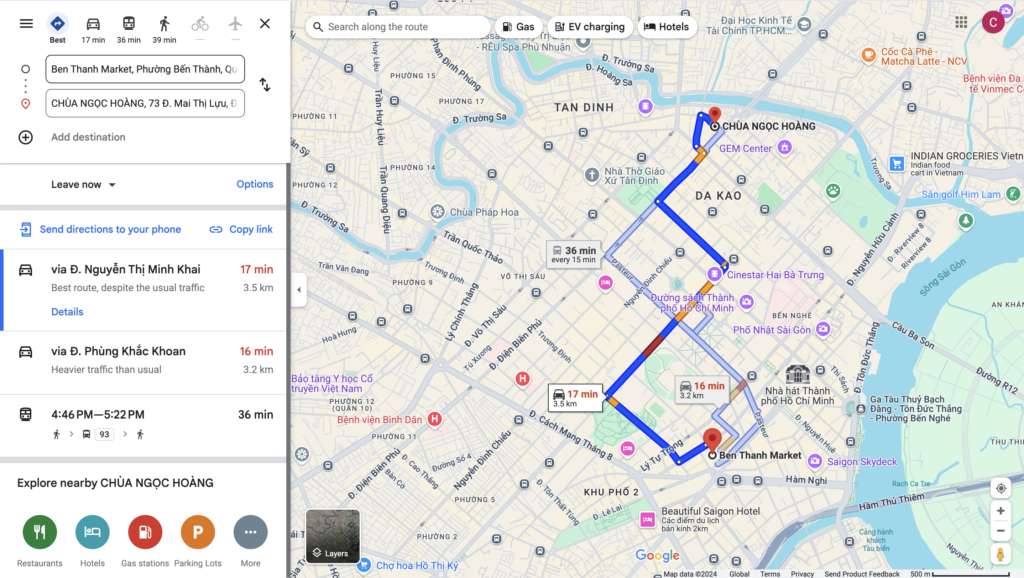
Although walking might not be the most convenient option due to the temple’s location on the edge of District 1, you have several options for getting to Jade Emperor Pagoda.
One of the most convenient ways is by taxi. From Ben Thanh Market, a popular landmark, the temple is approximately 3.5 km away. A quick taxi ride, which costs around 50,000 to 80,000 VND, will get you there in 10 to 15 minutes depending on traffic.
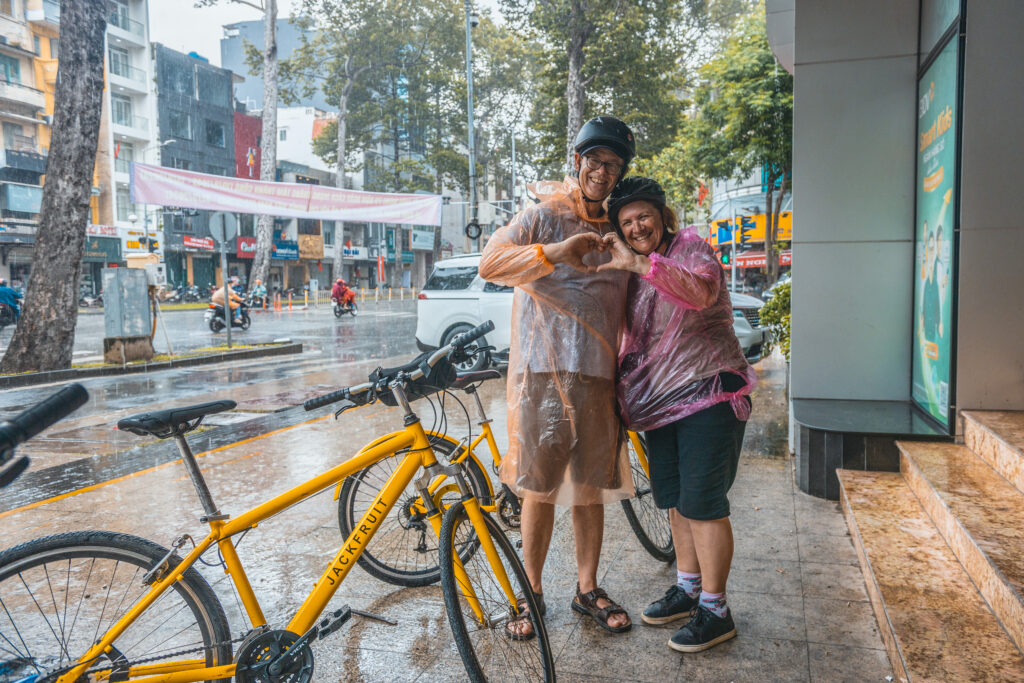
If you’re cycling around the city—an eco-friendly way to explore—you can easily reach the temple by bike. The ride from central District 1 takes about 20 minutes and gives you the chance to enjoy the streets of Ho Chi Minh City at a leisurely pace. For more adventurous cyclists, why not include this stop as part of a Ho Chi Minh Cycling tour, discovering off-the-beaten-path across the city?
For additional explorations, check out our blog on Where to Walk Around Saigon at Night and Top 10 Romantic Things to Do in Ho Chi Minh City.
Rules and Visiting Tips
When visiting Jade Emperor Pagoda, it’s important to keep a few cultural norms in mind to ensure a respectful and peaceful visit:
- Best Visiting Times: The temple can get quite crowded, especially in the late morning and afternoon. To fully appreciate its tranquil beauty, try to visit early in the morning when it’s quieter.
- Dress Code: As it’s an active place of worship, be sure to dress modestly. Both your knees and shoulders should be covered.
- Photography: Photos are allowed, but be mindful of worshippers. Avoid using flash and ask for permission before taking photos of monks or those engaged in prayer.
After visiting the pagoda, consider exploring other temples in District 1, including the stunning ones featured in our Top 9 Temples in District 1 guide.
History and Legends
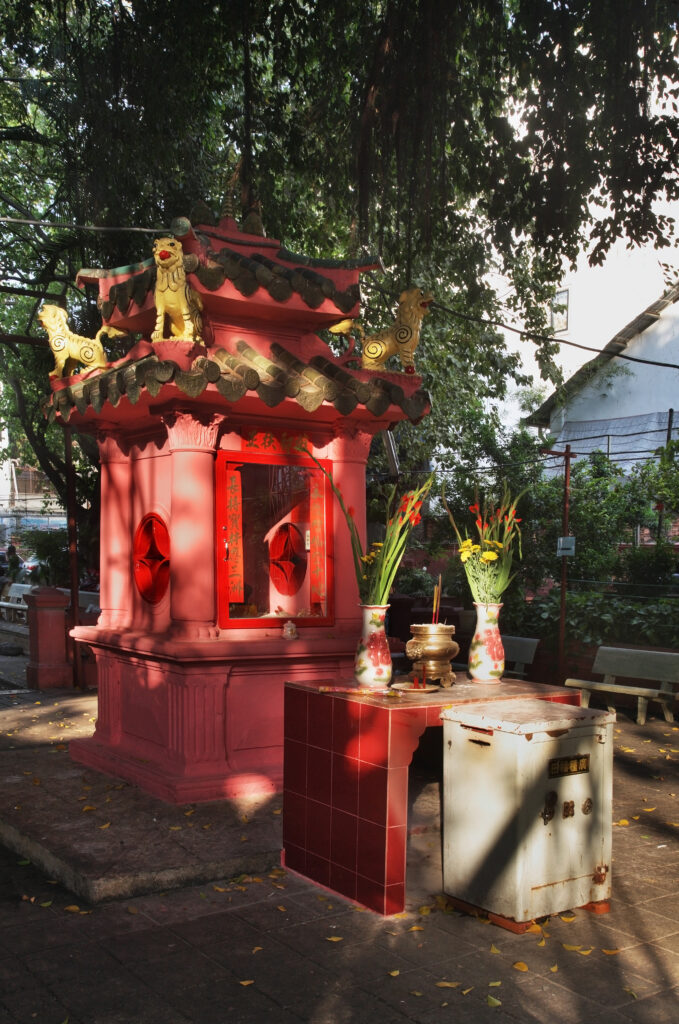
The rich history of Jade Emperor Pagoda, also known as Phuoc Hai Tu, began in the early 20th century. Built by the Cantonese community in Ho Chi Minh City, the pagoda was dedicated to the Jade Emperor, a supreme deity in Taoism. Over the years, the pagoda has remained a cultural and religious beacon for the Chinese-Vietnamese community in the city.
According to legend, the pagoda began as a simple thatched hut where villagers gathered to pray for protection from evil spirits. As the community grew, they decided to build a more permanent structure to honor the Jade Emperor, completing construction in 1909. Today, the pagoda is an architectural gem that continues to attract worshippers and visitors alike.
One of the most captivating stories tied to the Jade Emperor Pagoda is the tale of the Twelve Animals of the Chinese Zodiac. Legend has it that the Jade Emperor held a race to determine the order of the zodiac. Each animal had to cross a dangerous river, and their position in the zodiac was determined by the order in which they finished. You can see statues of these twelve animals—Rat, Ox, Tiger, Dragon, and others—throughout the temple, adding a layer of myth and folklore to your visit.
For more historic and cultural adventures, explore our guide to 26 Things to Do in Chinatown.
Jade Emperor Pagoda in Modern Times
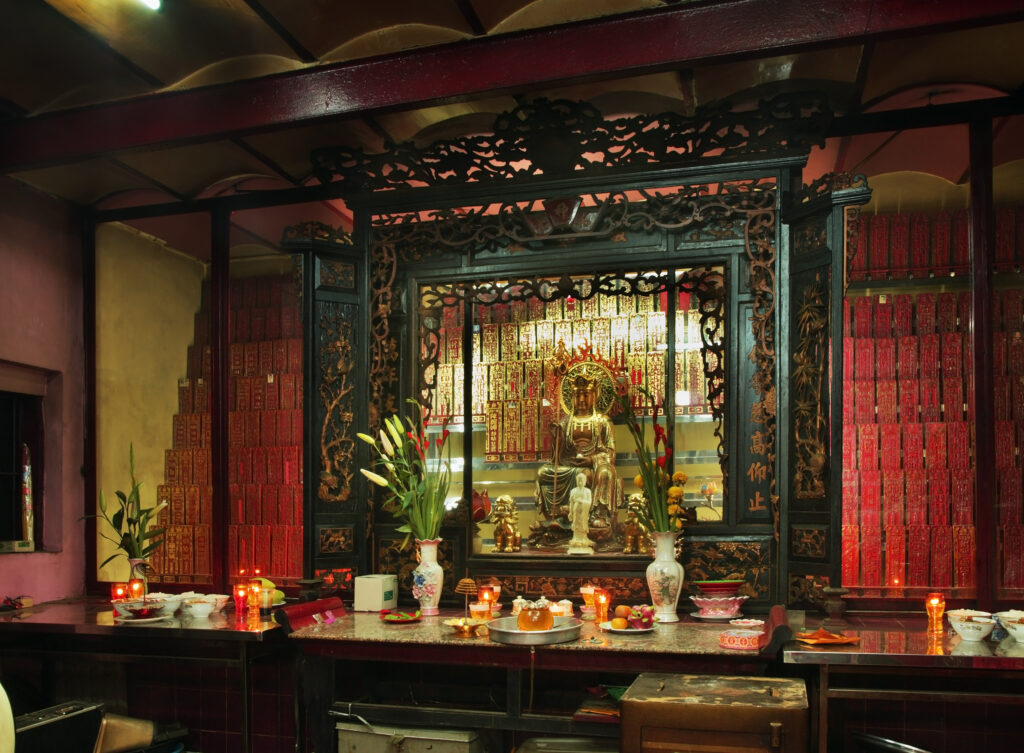
In the early 1980s, Thich Vinh Khuong, a renowned Buddhist monk, took charge of the pagoda, integrating it into the Vietnam Buddhist Association. Although officially renamed Phuoc Hai Tu, the temple is still popularly referred to as Jade Emperor Pagoda due to the continued prominence of the Jade Emperor’s chamber.
Multiple restoration efforts have helped preserve the temple’s beauty. Significant renovations took place in 1943, 1958, and again in the 1980s. These restorations have allowed the pagoda to maintain its stunning architectural and artistic integrity while adapting to the needs of a growing city.
In 1994, the pagoda was designated as a site of national artistic and architectural significance, solidifying its place as a treasured cultural landmark.
The 2016 visit by President Barack Obama added a modern touch to its long history, introducing the pagoda to a broader international audience.
Highlights and Architecture of Jade Emperor Pagoda
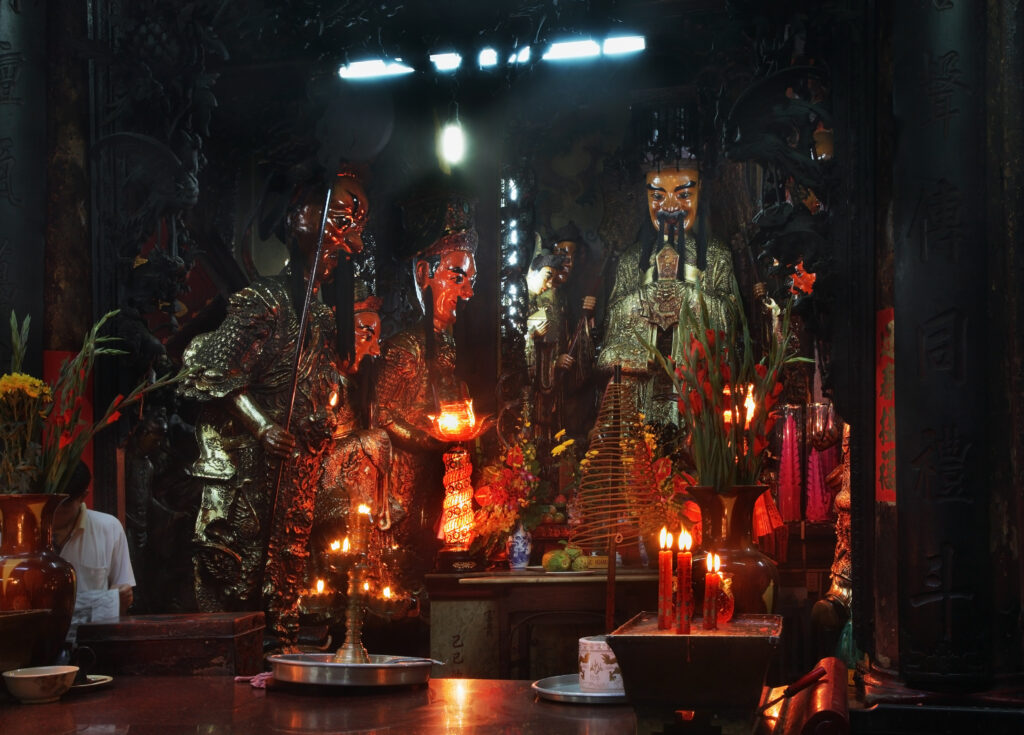
Jade Emperor Pagoda is a striking example of traditional Chinese-Vietnamese architecture, blending influences from both cultures. Its red-tiled roof, intricately carved wooden beams, and vivid decorations transport visitors to another time.
Main Hall

At the heart of the temple lies the Main Hall, dedicated to the Jade Emperor. This sacred chamber features a grand statue of the emperor himself, seated on an elaborate throne. Flanked by other gods and mythical creatures, the Jade Emperor’s room is the spiritual focal point of the temple, where visitors offer prayers and seek blessings.
Altar Rooms

Throughout the temple, various altar rooms are dedicated to different deities. Each altar is a visual feast, adorned with statues, candles, and colorful offerings. Worshippers come to pray for protection, prosperity, and health, creating a warm, communal atmosphere.
Ten Courts of Hell

One of the most intriguing aspects of Jade Emperor Pagoda is the Ten Courts of Hell—an area that graphically depicts scenes of punishment and retribution for sins committed in life. Based on Chinese Buddhist mythology, these vivid sculptures serve as a stark reminder of moral consequences. The artistic intensity of this area fascinates many visitors, adding a unique layer to the temple’s spiritual narrative.
Ancestor Hall

The Ancestor Hall offers a place for visitors to pay their respects to family members who have passed away. Adorned with ancestral tablets and traditional decorations, this space reflects the deep cultural practice of ancestor worship, which plays a significant role in the daily lives of Vietnamese people.
Gardens and Courtyards

Beyond the temple’s interior, Jade Emperor Pagoda also features serene gardens and peaceful courtyards. Lush with flowers and greenery, the courtyard offers a place for quiet reflection, making it a refreshing oasis in the middle of the bustling city. You can take a moment to sit in the shade, enjoy the fresh air, and soak in the spiritual atmosphere.
Let’s Wrap It Up
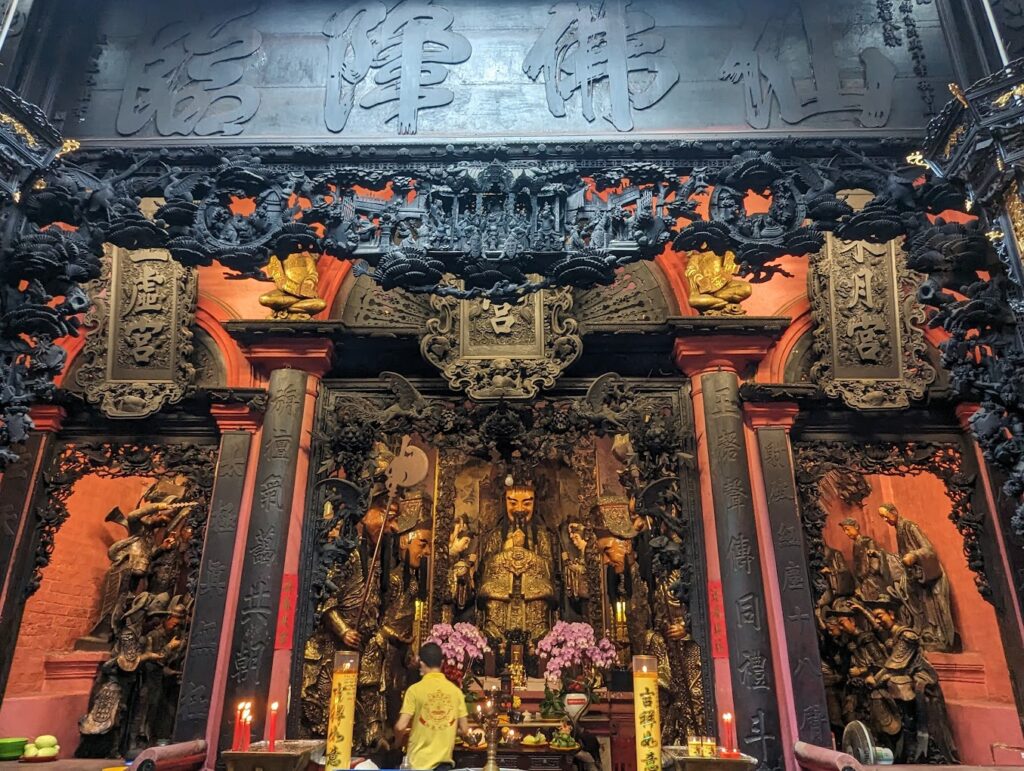
Visiting Jade Emperor Pagoda is more than just a touristic stop—it’s a journey into the spiritual heart of Ho Chi Minh City. As one of the city’s most revered temples, the pagoda serves as a reminder of the deep cultural and religious traditions that continue to thrive in modern Vietnam.
While the hustle and bustle of District 1 might feel far away as you step through the temple’s gates, inside you’ll find an atmosphere of reverence and peace, a contrast that makes this site even more special. Whether you’re a local seeking spiritual reflection or a traveler exploring the rich tapestry of Vietnamese culture, Jade Emperor Pagoda offers a unique and enriching experience.
For those eager to discover more of what the city has to offer, explore our guides on 12 Must-Do Tours in Ho Chi Minh City or 20 Things to Do in Ho Chi Minh City at Night. There’s always something exciting waiting just around the corner!
Ho Chi Minh City Cycling Tour In Ho Chi Minh City (Saigon) – Vietnam

At Jackfruit Adventure, we organize Ho Chi Minh City Cycling Tour and Team Building Ho Chi Minh. With a deep knowledge of Saigon city and local connections, we believe we can give you an awesome bonding time together. Contact us today if you have any requests or questions to prepare a trip for your team to bond in Ho Chi Minh – Vietnam.




